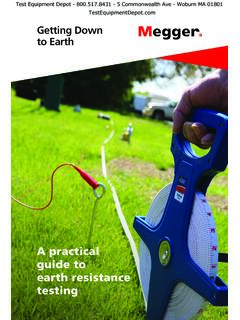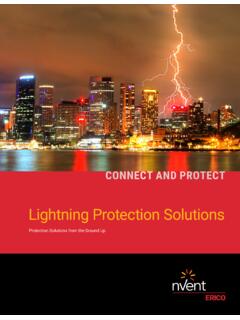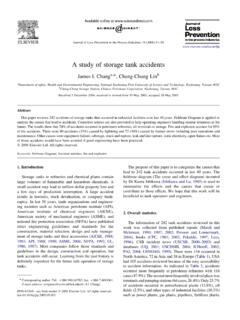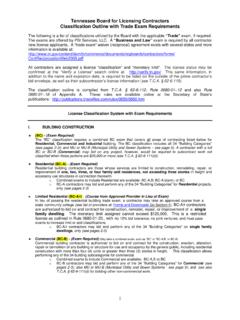Transcription of Ozone: Health hazards and control methods Guidance Note …
1 Page 1 of 10 Health and Safety ExecutiveOzone: Health hazards and control measuresGuidance Note EH38 EH38 (Third edition) Published 2014 This Guidance is primarily aimed at employers and managers of people exposed to ozone in the course of their work. Other groups, such as employees and Health and safety professionals, will also find the Guidance useful. It draws attention to the potential ill Health which exposure to ozone can cause and indicates potential sources of ozone at work as well as offering advice on the precautions you may need to take to prevent or control exposure.
2 Page 2 of 10 Health and Safety ExecutiveOzone: Health hazards and control measures Contents Introduction 3 Occurrence and properties 3 Effects on Health 3 ozone in the workplace 4 Complying with the COSHH Regulations 5 Prevention and control of exposure 6 Maintenance, examination and testing of control measures 7 Monitoring exposure 7 Reporting symptoms 8 First aid 8 Information, instruction and training 9 Emergency procedures 9 Consulting 9 References and further reading 9 Further information 10 Health and Safety ExecutiveOzone.
3 Health hazards and control measures Page 3 of 10 Introduction 1 This Guidance note is for employers and managers of people exposed to ozone in the course of their work. Other groups, such as employees and Health and safety professionals, will also find this Guidance useful. 2 It draws attention to the potential ill Health which exposure to ozone could cause and indicates potential sources of exposure at work. It gives advice on the precautions which you may need to take to prevent or control exposure as required by the control of Substances Hazardous to Health Regulations 2002 (COSHH).
4 It does not discuss environmental exposure to ozone or atmospheric ozone -depleting substances. 3 This Guidance should be read in conjunction with the COSHH Approved Code of Practice (ACOP).1 Occurrence and properties 4 ozone (O3) is a form of oxygen. It is a colourless gas with a distinctive odour and is a normal constituent of the earth s atmosphere. It is about times heavier than air (density g/I). 5 ozone is produced naturally from oxygen whenever sufficient ultraviolet (UV) radiation or electrical discharges occur, for example at high altitudes or by the action of lightning .
5 Such natural occurrences are unlikely to produce hazardous concentrations at ground level. The majority of ozone found near ground level is formed by photochemical reactions involving oxides of nitrogen and hydrocarbons. 6 ozone is an unstable substance, but its rate of decomposition varies widely depending on temperature and humidity. A given ozone output which yields a faint trace of ozone in a workroom atmosphere on a humid day may create an undesirable concentration on a dry day. These factors are important when considering occupational exposure to ozone .
6 7 ozone is a powerful oxidising agent and can react explosively with oil and grease. Low concentrations of ozone have a significant effect upon textiles, fabrics, organic dyes, metals, plastics and paints and cause the characteristic cracking of stressed rubber, commonly called weathering . A few substances, such as glass and some grades of stainless steel are, however, resistant to the oxidising effects of ozone . 8 ozone is not classified under the Regulation on Classification, Labelling and Packaging of Substances and Mixtures (known as the CLP Regulation).
7 ozone cannot be stored or transported in vessels because it decomposes spontaneously in the presence of oxidisable impurities, humidity and solid surfaces. It is always generated in situ, for immediate use, and is extremely unlikely to be supplied as a commodity. Labelling phrases are therefore inappropriate. Effects on Health 9 Since ozone is a highly reactive substance, any adverse Health effects will be found essentially at the sites of initial contact: the respiratory tract (nose, throat and airways), the lungs, and at higher concentrations, the eyes.
8 The principal Health effects are produced by irritation of and damage to the small airways of the lung. However, people have considerable variation in sensitivity. ozone : Health hazards and control measures Page 4 of 10 Health and Safety Executive10 Uncontrolled exposure to relatively high levels of ozone could lead to more severe Health effects, including lung damage. At the levels of exposure likely to be normally found in the workplace the main concern is irritation of the (upper) airways, characterised by coughing and a feeling of tightness in the chest.
9 11 This Guidance on establishing effective risk management measures for controlling exposure to ozone focuses on the control of exposure to levels at which any Health effects, if they did occur, would not be significant (see paragraph 28). ozone in the workplace 12 ozone is produced industrially by bombarding oxygen with UV radiation or by passing air through a high-voltage ac electrical discharge. It is used for a wide variety of industrial purposes including: to improve air quality in offices and as an odour suppresser in hotel bedrooms, commercial kitchens and cafeterias, food and fish processing plants, rubber compounding plants, chemical plants, sewage treatment works and cold stores; as a disinfectant in the production of drinking water; to overcome taste, odour and peaty colour problems in drinking water; as part of the water treatment process in the removal of pesticides.
10 As a disinfectant in swimming pools and hot and cold water systems; for pre-treatment in coating applications including inks, wood finishing, metal decorating and general industrial finishing; for pre-treatment of plastic surfaces immediately before printing; as a bleaching agent in both the textile and foodstuff industries; as a reaction initiator in the chemical industry. ozone is also produced as an incidental by-product of many industrial activities, some of which are described below. Ultraviolet radiation 13 During electric arc welding (specifically TIG and MIG/MAG techniques), metals are arc welded in the presence of a shielding gas.

















